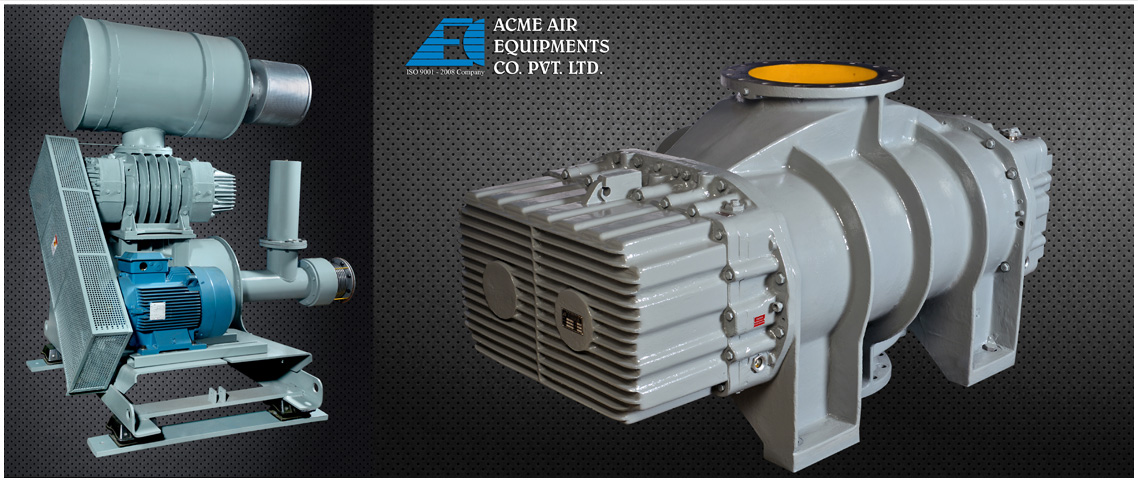Table of Contents
In high-performance industrial environments, airflow consistency is a non-negotiable parameter. Whether in a pressure or vacuum-driven system, any deviation or fluctuation in air delivery can undermine product quality, energy efficiency and equipment longevity. Among various technologies developed to ensure steady airflow, tri lobe roots blower technology has become a cornerstone of engineering design focused on process stability. Its specific mechanical configuration addresses the core challenge of pulsation control, enabling uninterrupted and balanced air delivery at varying loads.
How Tri Lobe Geometry Enhances Airflow Uniformity?
The defining feature of a tri lobe blower is its three-lobed rotor geometry. Unlike conventional two-lobe designs, this configuration allows more frequent but gentler compression cycles per revolution. The result is a smoother pressure curve with significantly reduced pulsation amplitudes.
Key Impacts on Process Stability:
- Uniform airflow eliminates micro-surges that disrupt pressure-sensitive systems.
- Constant discharge rate maintains equilibrium in dynamic load conditions.
- Minimized pressure drop fluctuations across the system enhance real-time control responsiveness.

This enhanced stability is particularly critical in systems requiring synchronized air pressure with
precision timing or delicate downstream process tolerances.
Vibration Reduction and Mechanical Equilibrium
Process fluctuation is not limited to air volume-it extends to mechanical vibration transmitted through structural components. The symmetrical design of tri lobe roots blowers naturally counterbalances rotational forces.
Technical Benefits:
- Reduced radial load imbalance ensures minimal vibration.
- Stable rotor motion allows high-speed operation without mechanical stress transfer.
- Less vibration leads to reduced fatigue in connected piping and fixtures.
By stabilizing both the fluid dynamic and mechanical parameters, tri lobe roots blower systems provide a dual benefit: sustained pressure control and longer equipment life.
Volumetric Efficiency Supports Consistent Delivery
An often-overlooked aspect of fluctuation-free airflow is volumetric efficiency. The more effectively a blower displaces air per rotation, the more consistent the downstream pressure will be.
Design Advantages:
- Precision rotor-to-housing clearances limit internal leakage.
- Synchronized timing gears prevent contact and air surge variability.
- Maintained efficiency at partial loads ensures reliable performance under demand fluctuations.
Thus, tri lobe blower design not only minimizes pressure pulsations but also ensures that the delivered volume remains tightly within the operational tolerances, regardless of load variation.
Thermodynamic Behavior Under Control
Air compression naturally generates heat. If not properly managed, this thermal buildup can induce pressure swings or inconsistencies, especially in closed-loop systems. The thermally stable operation of tri lobe blowers contributes to pressure reliability.
Thermodynamic Control Features:
- Even temperature distribution across the compression chamber minimizes expansion-induced airflow
deviation. - Balanced flow prevents sudden thermal surges or pressure spikes.
- Reduced thermal cycling preserves rotor alignment and housing integrity.
All of these factors work together to ensure that airflow remains stable across both time and thermal
gradients, a requirement for process continuity in temperature-sensitive operations.
Acoustic Characteristics and Their Role in Stability
Fluctuation in airflow is often audible as mechanical noise or pulsation-related resonance. In many cases, acoustic disturbances are symptomatic of underlying flow instability. The acoustic performance of a tri lobe vacuum blower thus directly correlates with its ability to deliver fluctuation-free air.
Acoustic Performance Indicators:
- Higher frequency, lower amplitude discharge reduces sound pressure variation.
- Minimal pulsation-induced vibration noise translates to steadier flow performance.
- Noise uniformity serves as a diagnostic indicator for system equilibrium.
This link between audible behavior and pressure consistency provides operators with an additional layer of control through non-invasive monitoring methods.
Conclusion
In engineering terms, process stability is the convergence of mechanical precision, fluid control and thermodynamic balance. Tri lobe roots blower technology addresses all three dimensions by delivering an airflow free of disruptive fluctuations, even under dynamic load and environmental conditions. From its unique rotor geometry to its vibration-canceling design and volumetric efficiency, this technology serves as a foundational element for any system where pressure integrity and operational stability are paramount.
Whether integrated into vacuum circuits or high-pressure pneumatic configurations, the tri lobe blower remains a proven solution for maintaining continuity, performance and peace of mind in complex industrial processes.
FAQs About Tri Lobe Roots Blower
What makes tri lobe roots blower airflow fluctuation-free?
Its three-lobe rotor design produces more uniform pulses per rotation, significantly reducing pressure variation during operation.
How does tri lobe roots blower design support process stability?
It ensures consistent airflow, minimizes vibration and maintains volumetric efficiency even under load changes.
Why is low vibration important in blower systems?
Reduced vibration preserves system alignment, extends component life and stabilizes connected equipment performance.
Can tri lobe roots blowers maintain efficiency at variable loads?
Yes, they maintain consistent volumetric delivery and pressure even during partial or shifting load conditions.
Do tri lobe blowers help control thermal-induced pressure changes?
Their balanced operation manages heat distribution, reducing thermal spikes and maintaining steady output pressure.
About Author

CEO
Mr. Vishwesh Pardeshi is the CEO of Acme Air Equipments Company Pvt. Ltd., an industrial and engineering goods manufacturing company based in Ahmedabad, Gujarat (India). He has taken over the responsibility from founding Partners and Directors of the Company, and is now leading a talented group of professionals since 2020 by bringing in vast industrial and management expertise. By qualification, he holds a Bachelor Degree in Mechanical Engineering and also holds a MBA degree from reputed institutes. Under his leadership, the Company has successfully executed prestigious projects by delivering high quality and world class products from a state of the art manufacturing facility which combines CNC-enabled precision manufacturing and strong after sales support. In line with the Vision, Mission and Core Values of the Organization, Mr. Vishwesh Pardeshi continues to drive Quality, Reliability and Global Expansion at Acme Air Equipments Co. Pvt. Ltd.









